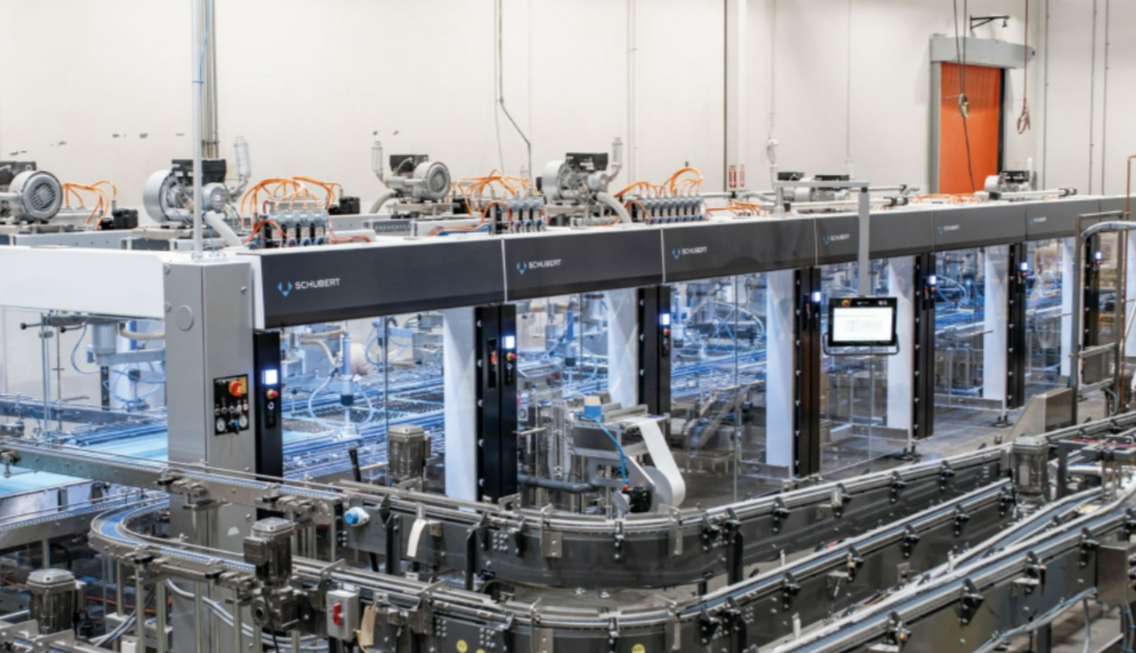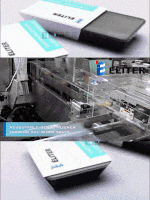Chinese Packaging Machine Manufacturers Surge Ahead in Global Market
2024-07-02
The Chinese packaging machine manufacturing sector is witnessing unprecedented growth, rapidly capturing significant global market share traditionally dominated by Western competitors. Recent data reveals that Chinese manufacturers now account for approximately 35% of the global packaging machinery market, up from 20% just five years ago.

Industry Overview
The packaging machinery industry is a critical component of global manufacturing and logistics, providing essential equipment for packing, labeling, and shipping products across various sectors, including food and beverage, pharmaceuticals, and consumer goods. Efficient packaging solutions are vital for maintaining product integrity, extending shelf life, and ensuring safe transportation. Historically, Western countries have led in this industry, with renowned brands from Germany, Italy, and the United States setting the standard for quality and innovation.
However, in recent years, China has emerged as a formidable player, transforming its packaging machinery sector through a blend of technological advancements, strategic investments, and competitive pricing. This transformation is not only reshaping the global market but also redefining the benchmarks for efficiency and cost-effectiveness in packaging solutions.

Global Market Analysis
As of 2024, the global packaging machinery market is valued at approximately $50 billion, with significant contributions from several key regions:
- China: Chinese manufacturers now hold 35% of the global market share, a dramatic increase from 20% in 2019. This growth is driven by advanced technology, competitive pricing, and strategic acquisitions.
- Germany: Traditionally a leader in the packaging machinery industry, Germany’s market share has seen a slight decline, now holding around 25% of the global market. German companies continue to be recognized for their engineering excellence and innovative solutions.
- Italy: Another major player, Italy accounts for roughly 15% of the global market. Italian firms are known for their high-quality machines and strong design capabilities.
- United States: U.S. manufacturers have maintained a stable market share of around 12%, focusing on high-tech solutions and robust machinery suitable for a wide range of industries.
- Japan: Japan holds about 8% of the market share, with a focus on precision engineering and reliable machinery.
Key Factors Driving Growth
- Innovation and Technological Advancements: Chinese companies have significantly ramped up investments in research and development. These investments have led to the creation of highly efficient and technologically advanced packaging machines that incorporate the latest in automation, robotics, and IoT (Internet of Things) technology. As a result, the industry has seen a 25% increase in patent filings related to packaging technologies over the past three years.
- Competitive Pricing: Leveraging cost-effective manufacturing processes and economies of scale, Chinese firms have managed to offer high-quality machinery at competitive prices. This price advantage has been pivotal in attracting international buyers, contributing to a 40% increase in export sales. By utilizing advanced manufacturing techniques and maintaining lower production costs, Chinese manufacturers can deliver value without compromising on quality.
- Strategic Partnerships and Acquisitions: Chinese manufacturers have actively engaged in strategic partnerships and acquisitions with leading global companies. These partnerships have enabled the transfer of advanced technologies and expanded market presence in key regions such as Europe and North America. Notably, the acquisition of several European packaging technology firms has provided Chinese companies with access to cutting-edge technologies and broadened their customer base.
- Government Support: The Chinese government’s supportive policies, including subsidies for technological innovation and export incentives, have played a crucial role in the sector’s growth. In 2023 alone, the government allocated over $500 million in grants to the packaging machinery sector. This financial support has facilitated the development of new technologies and expanded production capacities.
Interview: Insights from a Food Manufacturing Company
To understand the impact of Chinese packaging machinery on global businesses, we spoke with Mark Johnson, the owner of FreshBite Foods, a mid-sized food manufacturing company based in the United States.
Q: Mr. Johnson, why did FreshBite Foods decide to purchase packaging machines from China?
Mark Johnson: “When we were looking to upgrade our packaging line, we explored options from several countries. Ultimately, we chose Chinese machines because they offered the best value for money. The machines are highly advanced and incorporate the latest technologies, which was crucial for our needs. Moreover, the cost savings were significant compared to European and American alternatives.”
Q: How has the performance of these machines been so far?
Mark Johnson: “The performance has been excellent. The machines are reliable, easy to operate, and maintain. We’ve seen a noticeable improvement in our packaging efficiency and product quality. The after-sales support from the Chinese manufacturer has also been very responsive and helpful, which is a big plus.”
Q: Were there any initial concerns about purchasing from China? If so, how were they addressed?
Mark Johnson: “Initially, there were some concerns about the quality and durability of the machines, as well as the availability of technical support. However, we did thorough research, including visiting the manufacturer’s facilities in China and speaking with other customers. The company provided comprehensive training and set up support, which alleviated our concerns.”
Q: Would you consider purchasing more machinery from China in the future?
Mark Johnson: “Absolutely. Given our positive experience, we would definitely consider Chinese machinery for future upgrades. The combination of advanced technology, competitive pricing, and reliable support makes it a very attractive option for our business.”
Future Projections
Market analysts predict that by 2026, Chinese companies could command nearly 50% of the global packaging machinery market, given the current growth trajectory and ongoing investments in innovation and global expansion. The sector is expected to continue evolving with advancements in smart packaging solutions, sustainability practices, and automation technologies, driven by Chinese firms’ relentless pursuit of excellence.
The rise of the Chinese packaging machine manufacturing sector underscores a broader trend of technological prowess and competitive strategy, positioning China as a formidable player in the global industrial landscape. As the industry continues to innovate and expand, Chinese manufacturers are set to redefine global standards in packaging machinery, offering efficient, high-quality, and cost-effective solutions to meet the diverse needs of international markets.




